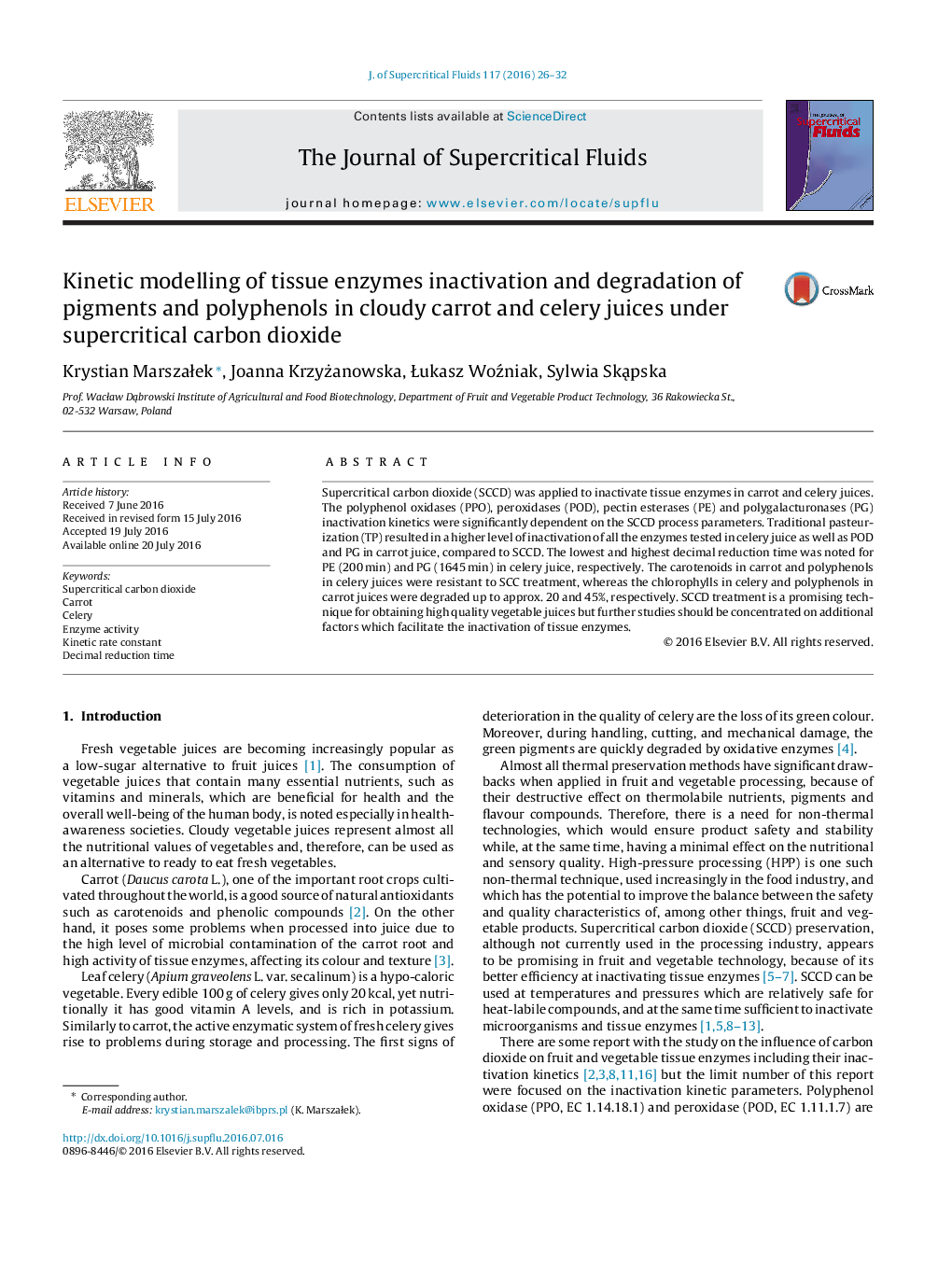| کد مقاله | کد نشریه | سال انتشار | مقاله انگلیسی | نسخه تمام متن |
|---|---|---|---|---|
| 229938 | 1427360 | 2016 | 7 صفحه PDF | دانلود رایگان |
• TP was more effective for enzyme inactivation compared to SCCD.
• The highest k-value was noted for POD whereas the lowest for PE.
• The highest D-value was noted for POD whereas the lowest for PG.
• The fastest degradation of pigments was noted for the harshest conditions of SCCD.
Supercritical carbon dioxide (SCCD) was applied to inactivate tissue enzymes in carrot and celery juices. The polyphenol oxidases (PPO), peroxidases (POD), pectin esterases (PE) and polygalacturonases (PG) inactivation kinetics were significantly dependent on the SCCD process parameters. Traditional pasteurization (TP) resulted in a higher level of inactivation of all the enzymes tested in celery juice as well as POD and PG in carrot juice, compared to SCCD. The lowest and highest decimal reduction time was noted for PE (200 min) and PG (1645 min) in celery juice, respectively. The carotenoids in carrot and polyphenols in celery juices were resistant to SCC treatment, whereas the chlorophylls in celery and polyphenols in carrot juices were degraded up to approx. 20 and 45%, respectively. SCCD treatment is a promising technique for obtaining high quality vegetable juices but further studies should be concentrated on additional factors which facilitate the inactivation of tissue enzymes.
Figure optionsDownload as PowerPoint slide
Journal: The Journal of Supercritical Fluids - Volume 117, November 2016, Pages 26–32
